If you’re a first time SDR, chances are you’ll have a poker face the first few days. The B2B SaaS industry is full of technical words and if you want to be a superstar SDR, you’ll have to learn them.
So we have put together some B2B SaaS jargon for you –
What are the main roles in Sales and Prospecting?
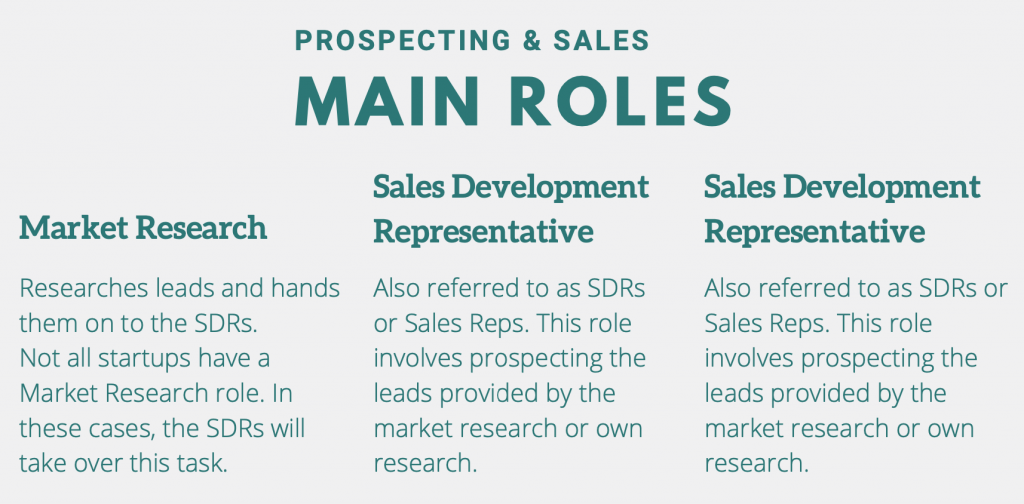
The profile of a Market Research is not always present in all startups and if that’s the case, this task will fall to the SDR. But it sometimes makes sense to have one person whose job is to find new companies to enter the funnel. When should we expect to find a Market Research position? Especially when you’re targeting smaller companies or they’re hard to find.
In B2B SaaS startups, the sales process is divided into two stages:
- Prospecting: this is where the SDRs come into play. Sales Development Representative, Sales Rep, SDR… Different names, same meaning. In any case, SDRs are those in charge of contacting and qualifying leads. Their aim is not to sell or to close deals, but to understand the lead’s pain and explain them how you can help them with your product and close a qualified meeting with the Account Executive.
- Sales: Allow us to introduce the salesperson, the AE. The Account Executive will indeed be the one who will meet with the prospect, explain the product in depth, show a demo, and close the deal.
Inbound vs Outbound
There are two approaches to reach new leads. If the lead reaches your company, that would be inbound. By contrast, if you are the one reaching out to the lead, we’d consider this outbound.
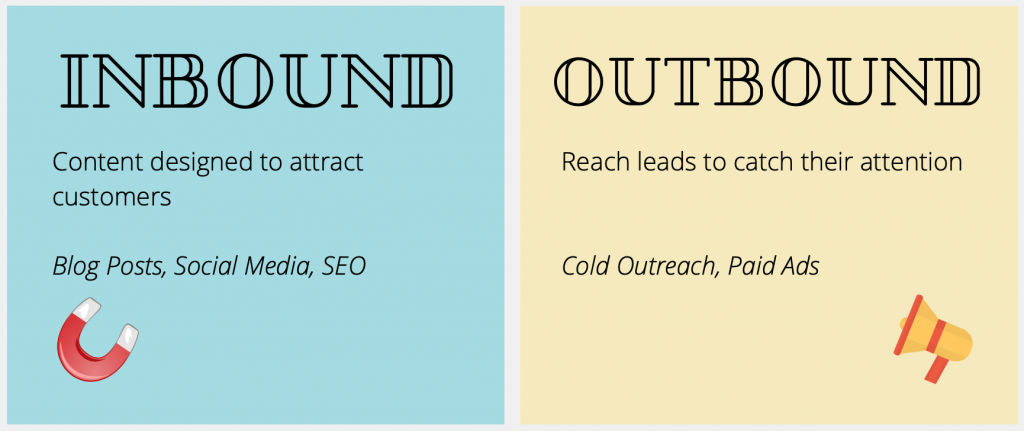
So, let’s set an example.
The marketing team works hard to create engaging content for the company blog and to keep their social media accounts active. If a lead follows the LinkedIn page or the blog and decides to contact your company because of what they’ve read, that would be an inbound lead.
Another example? Demo requests. Every company has a CTA on their website to request a demo. The lead is contacting you because they’ve been navigating your website, or they’ve googled solutions to their pain. But whatever the reason might be, the lead contacted you because they’re interested in your product.
Now, what if you, as an SDR, call a lead who is not expecting your call? Well, you guessed it right, that would be outbound.
So can SDRs do inbound and outbound? Glad you asked. Absolutely! If you’re reaching out to a list of leads who are not expecting to be contacted, you’ll be doing outbound. But if you’re reaching out to leads who have requested a demo, for example, you’ll be doing inbound.
Lead vs Prospect
Okay, let’s stop for a moment. We’ve been using the words “lead” and “prospect”. As a first time SDR, these are concepts you must master. What are they? What’s the difference?
Easy. A lead is just an email, a phone number. You know that the person behind those contact details is part of your target market, but it still needs to be qualified.
If the lead is qualified (which you’ll determine after asking qualifying questions), the lead will become a prospect.
In other words, you will work with leads and transform them into prospects.
Hot, cold, and warm leads
Depending on how “ready” leads are to be prospected, we use different names to refer to them.
So, have a guess, who do you think are the most ready to be prospected? Hot leads, that’s right! And who would those be? Well, those who ask to see your product, (drum roll), direct requests.
Now, who would be cold leads? Those we’ve contacted through outbound.
But what about warm leads? Remember when we mentioned how content can help attract inbound leads? Well, here’s why. They won’t be as easy to convert as the ones coming from direct requests, but they’ll be quicker to get through the funnel than cold leads.
Qualification criterion
This is where it gets a bit more tricky. Let’s dig a bit deeper into what criterion are used to qualify leads –
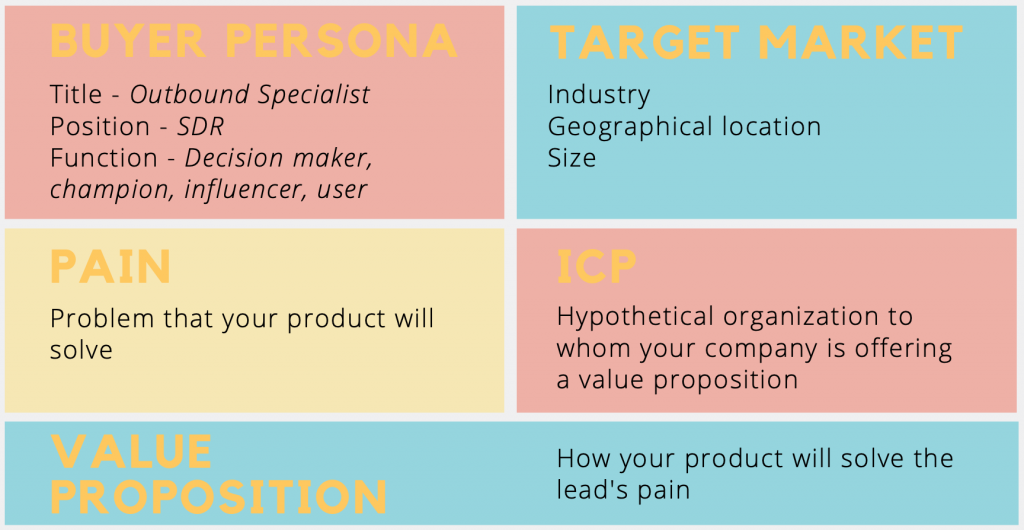
Buyer persona
This concept is used quite often in marketing, and it’s built up from three variables –
- Job Title: This is the label used by the company. For example, Outbound Specialist or Outbound Sales Consultant.
- Job Position: This describes your responsibilities. For example, SDR.
- Function: You will all have heard about the decision maker. But he’s not the only one. Especially when we’re addressing larger companies, we might not even have access to the decision maker to start with. But there are other profiles you can approach, such as the champion, influencer, and user.
Target Market
The target market also has three variables –
- Industry – Some examples could be Tech, Banking, Education.
- Geographical location – A country or region
- Size – there are different ways of referring to size. One example is the classic SMB/SME/Enterprise classification, but some startups use animal analogies.
ICP
The Ideal Customer Profile is a hypothetical organization who would be a perfect fit for your product and value proposition.
Pain
Your product will solve a problem, and that problem is what we call “pain”. And it will be your job as an SDR to find the lead’s pain. How? Previous research and qualifying questions. If you ask the right questions, it will also help engage the lead and increase the chances of booking that qualified meeting you’ve been working hard to achieve.
Value Proposition
The value proposition is a statement of how your product will solve the lead’s pains. So, yes, each pain will have a different value proposition.
Market maturity
You may have heard of this one before. But let’s see how this relates to the concepts we’ve been discussing.
Immature markets, also referred to as blue oceans, are those with few competitors. In this situation, your ICP may not be aware of their pain or, at most, they won’t know there is a solution to their pain. So, if they don’t know they have a pain or that there is a solution to it, would they research solutions for it? Probably not. So the main approach in this situation would be outbound.
On the contrary, mature markets or red oceans are highly competitive. Your ICP is aware of their pain and knows there is a solution to it. Because there are several options, they’ll compare and choose the best one. As a result, the inbound approach will gain importance since they will actively research different solutions.
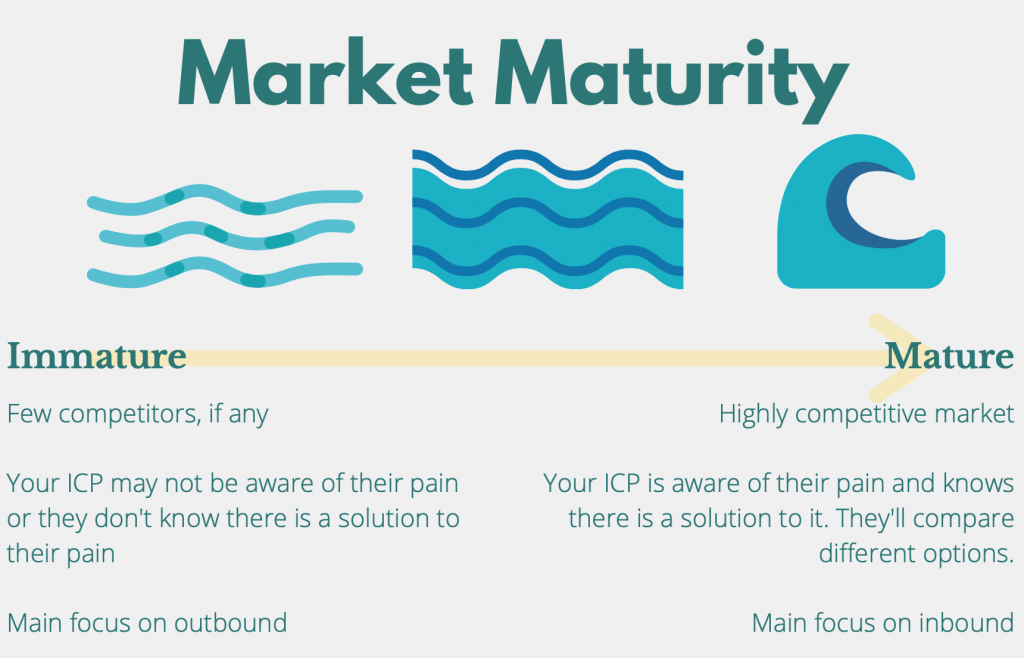
Sales Funnel vs Sales Pipeline
Sales Funnel
The Sales Funnel is the process a lead goes through to become a prospect and eventually a customer.
It begins with the awareness stage, when the lead is aware of their problem and seeking resources to better understand it. The lead will move through the funnel showing an interest for your product and later on will develop the intent to buy it. If the AE makes a good job, the prospect will evaluate purchasing it and end up buying your solution.
Sales Pipeline
The Sales Pipeline is the equivalent of the Sales Funnel, but from your company’s perspective. These are the steps the prospecting and sales team have to follow to convert leads into loyal customers.
The process will start by contacting the lead and qualifying them. Then the AE will meet with the prospect, show a demo, and create a proposal. Once the contract is signed, the Customer Success team will will ensure they renew the contract.
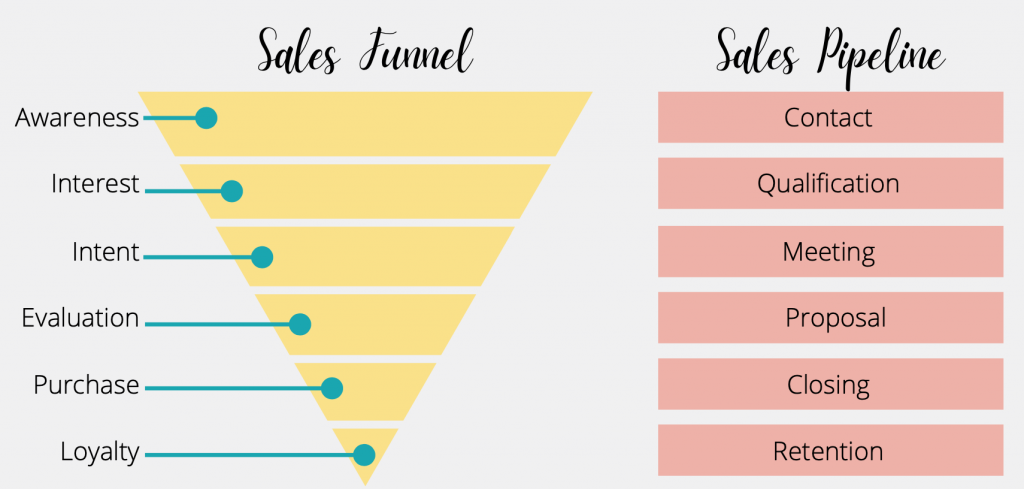
Are you feeling lost during your first days as an SDR? Find out how a Sales Playbook can help you book more qualified meetings, especially as a first time SDR.
Want to read more fresh content about the role of an SDR and sales teams? Check out more articles.
